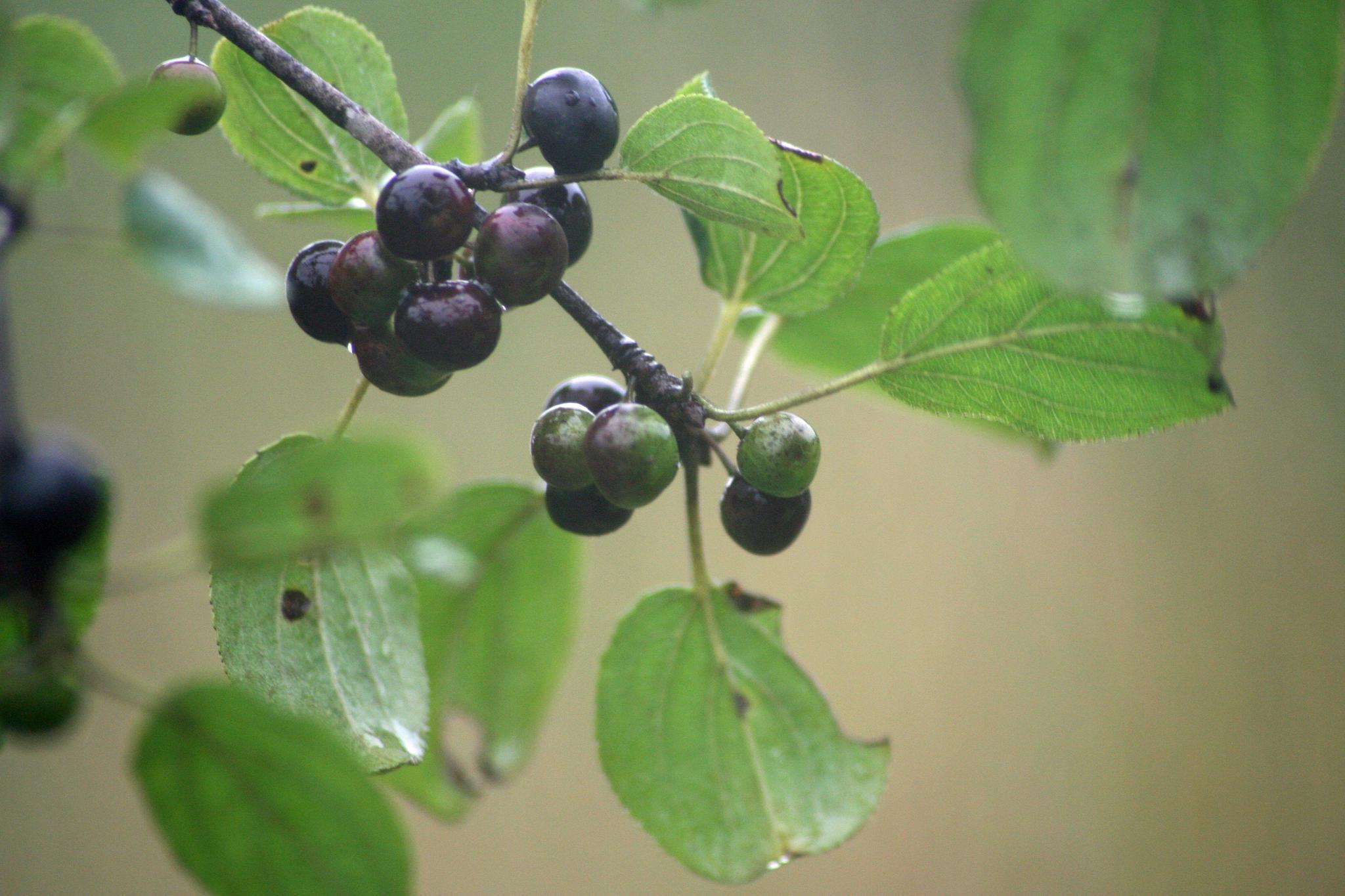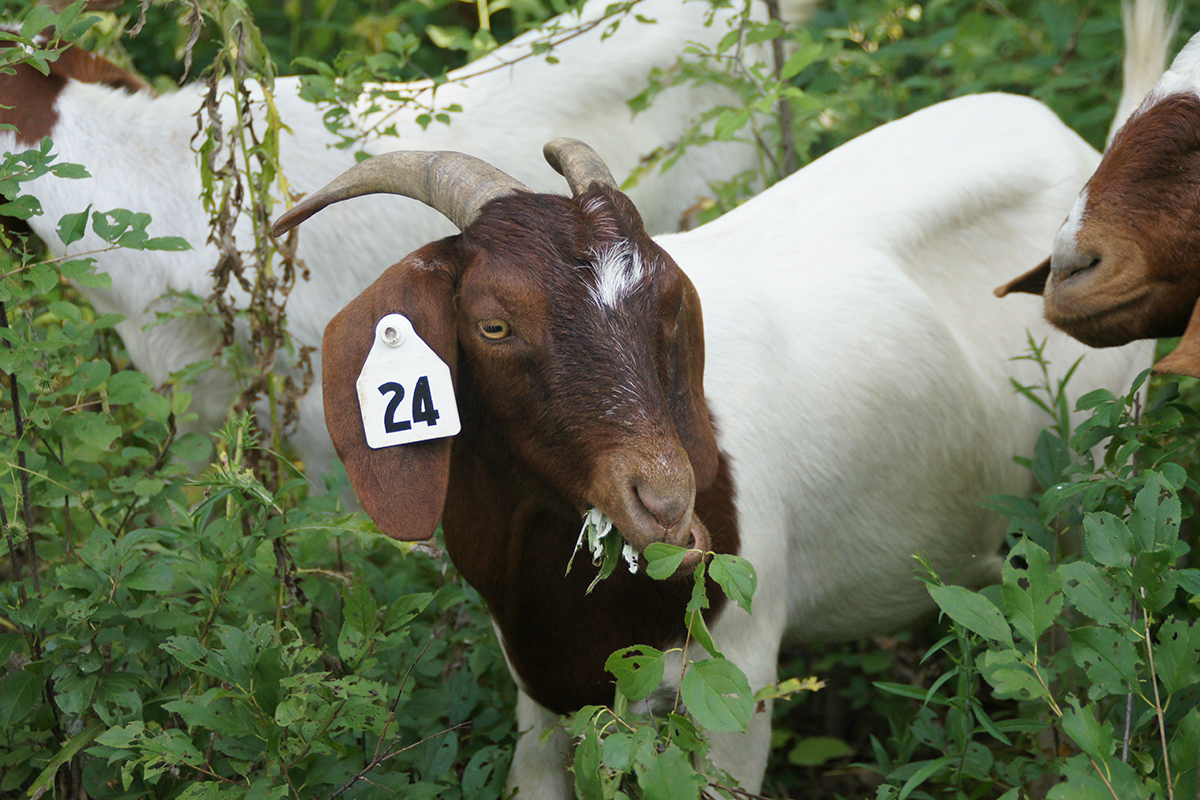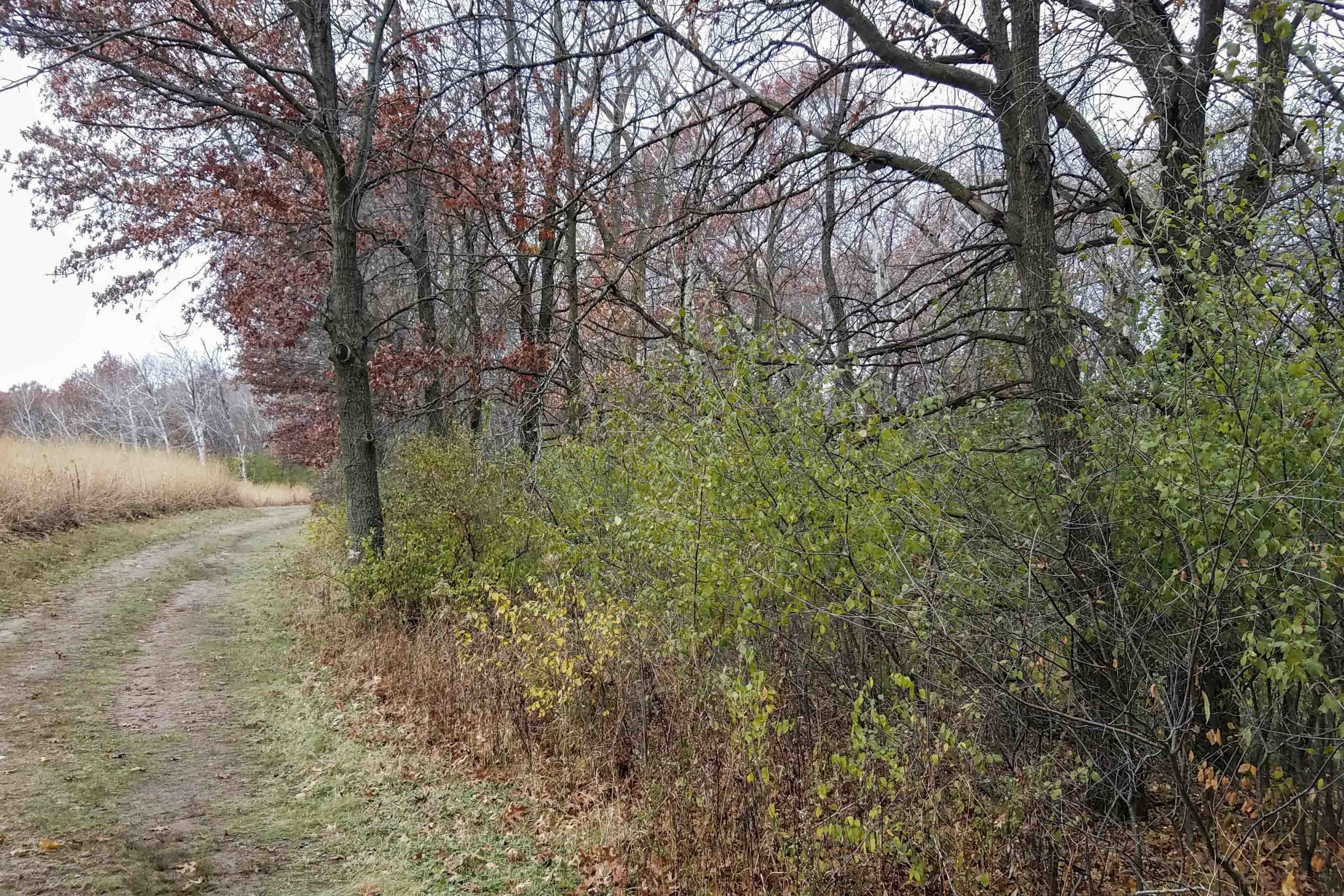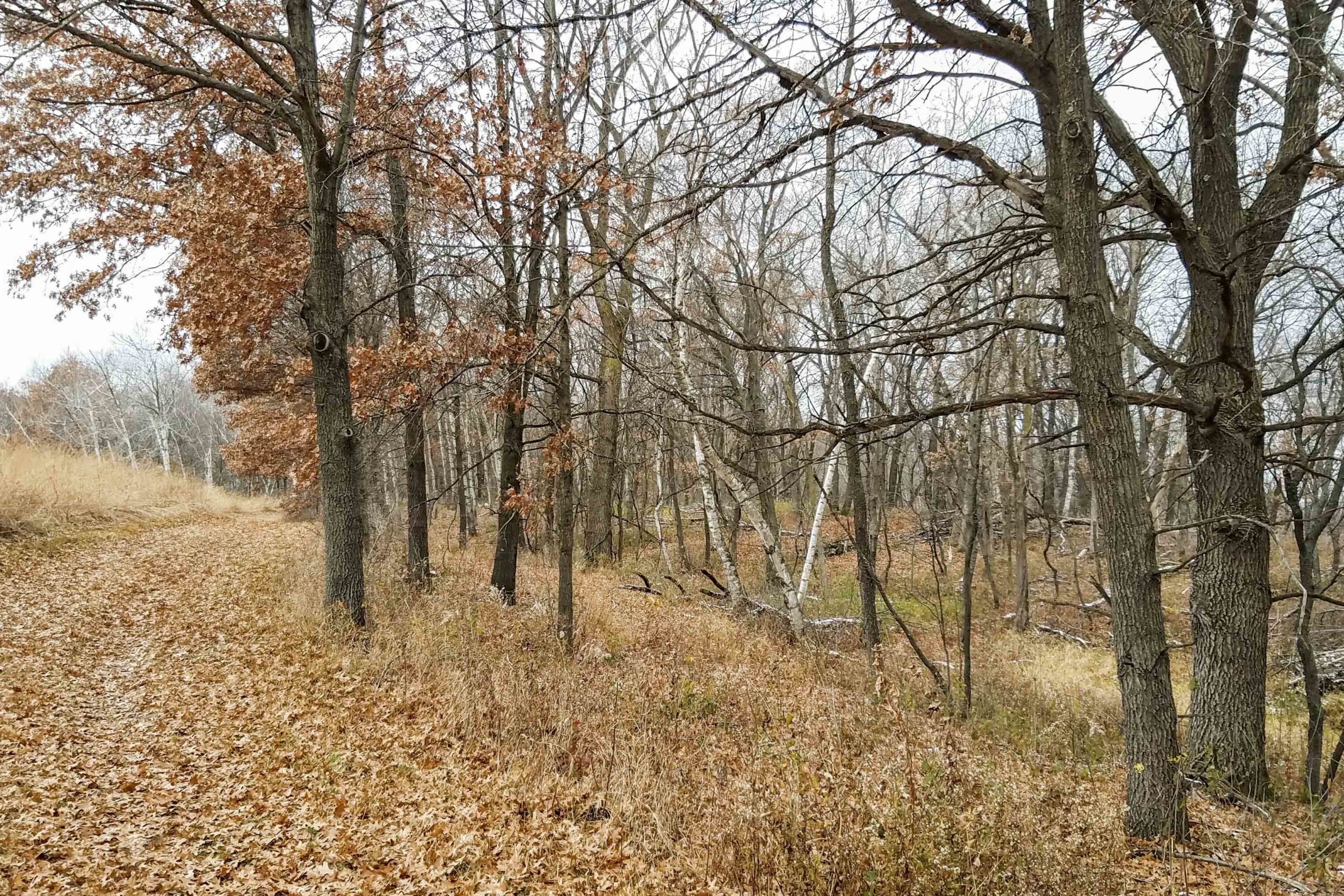TAKE YOUR WOODS BACK
WHAT IS BUCKTHORN?
Common Buckthorn (Rhamnus cathartica) and Glossy Buckthorn (Frangula alnus) are invasive shrubs or small trees which came from Europe through the nursery trade. They have escaped cultivation and spread throughout the Midwest into our woodlands and forests.


WHAT IS BUCKTHORN?
Common Buckthorn (Rhamnus cathartica) and Glossy Buckthorn (Frangula alnus) are an invasive shrub that came from Europe through the nursery trade and has escaped into our woodland landscapes. It has spread throughout the Midwest into our woodlands and forests.
WHY IS BUCKTHORN BAD?
When non-native buckthorns becomes established, they choke out all native woodland vegetation by replacing and shading out the existing understory. The woodland understory is the foundation of a diverse habitat for pollinators and other wildlife. The understory plants are the building blocks of an entire ecosystem. When buckthorn becomes pervasive on your property it contributes to a larger loss of habitat on a regional scale. It also reduces plant community biodiversity by minimizing the variety of plants that can grow by choking out sunlight and extracting soil nutrients.
Once the buckthorn takes hold it also can make your woodland less accessible for people to enjoy. Opening up the forest view creates possibilities for seeing birds and other wildlife in your property. It allows you to become a part of the ecosystem as you experience the full potential of your forest.
If you manage buckthorn on your property, your contribution can help save an ecosystem!
WHY IS BUCKTHORN SO BAD?
When Buckthorn becomes established, it chokes out all native woodland vegetation by replacing and shading out the existing understory. The woodland understory is the foundation of a diverse habitat for pollinators and other wildlife. The understory plants are the building blocks of an entire ecosystem. When buckthorn becomes pervasive on your property it contributes to a larger loss of habitat on a regional scale. It also reduces plant community biodiversity by minimizing the variety of plants that can grow by choking out sunlight and extracting soil nutrients.
Once the buckthorn takes hold it also can make your woodland less accessible for people to enjoy. Opening up the forest view creates possibilities for seeing birds and other wildlife in your property. It allows you to become a part of the ecosystem as you experience the full potential of your forest.
If you manage buckthorn on your property, your contribution can help save an ecosystem!
WHAT CAN YOU DO?
Removing buckthorn, and other relevant woody invasives, is one of the most significant things you can do to manage the health of a woodland. Removing buckthorn, however, is no easy challenge. There is more than one way to get the job done. Start with considering how much is there, how mature the plants are, and if there is a healthy understory beneath the buckthorn. This initial assessment will help you or your land management team determine the best buckthorn management strategy. Whether you are taking a DIY approach or hiring professionals like Landbridge Ecological to manage your buckthorn, always keep your end goal in mind because buckthorn removal is dynamic ongoing work.
Here are a few of the management techniques you can use to remove buckthorn:


HAND PULLING
One DIY option for smaller stands is removal by the roots. This is a method that does not involve any chemicals but is more labor intensive. Smaller plants can be hand pulled, and larger plants can be extracted with a weed wrench.
With this technique it is important to consider how the land will be disturbed. Pulling plants up by the roots will cause a lot of soil to come up with them, and loose soil can runoff into nearby lakes or rivers. If a native ground layer is still present, pulling up a lot of buckthorn can be detrimental to native plant recovery. Disturbed soil can also release weed seed currently trapped in the soil bank. Considering how species like garlic mustard, burdock, thistle, etc. will respond is an important consideration

CUT AND STUMP TREATMENT
This tends to be the most common approach to addressing a mature stand, with the benefits of low soil and native plant community disturbance. This method involves the following steps:
- Cut the plant with a lopper, pruner, or chainsaw down to a stump
- Treat the stump with an herbicide to curb regrowth
- Remove the material via chipping, burning, or hauling it away
Landbridge has experienced ground crews which are trained in chainsaw safety and targeted herbicide application.
With this management technique, our crew typically starts by using chainsaws to cut the material down and “buck” the material up so it can be hauled to burn piles or a chipper. As we move through the woodland removing the material, we also stump treat the root system with a specific and targeted herbicide to keep the plant from resprouting. Any plant that is cut but not treated will resprout the next growing season.
We typically do this work in the winter when the ground is frozen to minimize impact to the woodland floor. It’s a good time for this work as there are no leaves on the buckthorn plants, and it’s easier to haul out or stack.

FORESTRY MOWING
If a site is conducive to large machinery, forestry mowing is a cost-effective method to remove buckthorn. Forestry mowing involves a skid steer with a mulching attachment. This method has the advantage of one trained machine operator can complete more acres in a day than a crew doing the work by hand for several days. We recommend this method on very large sites where there is only buckthorn in the understory, and where the impacts of the large machine is not in highly visible areas. One of the limitations of this method is the material being mulched and scattered across the site, which can have less aesthetic appeal. The material breaks down in the soil and decomposes over time. This method can be utilized on a smaller scale too, but the pros and cons must be considered.

ORGANIC BIOCONTROL
Goats and other grazing animals are a great way to organically remove buckthorn. If you want to remove buckthorn without herbicides or heavy machinery, this can be a great method. Organic methods typically take multiple seasons to complete. Another limitation is the animals do not limit their grazing to buckthorn only, so all the vegetation can be impacted. For grazing to be most effective, material must be small enough for the animals to graze, with a small diameter and a 2-6-foot maximum height. Landbridge has experience with grazing goats to manage buckthorn, and if the conditions are right, we can implement this method to manage buckthorn organically.
Grazing is a more expensive and longer-term management technique as we need to graze multiple times over a season over multiple seasons to be effective. The goat herd must be managed by moving it regularly to avoid damage to desirable trees and vegetation.
While this is a method we can and have used in the past, it is not a common method as there are many conditions to consider. Every site is different and not all sites are best for grazing animals.

WHAT CAN YOU DO?
Removing buckthorn is one of the most significant things you can do to manage the health of a woodland. Removing buckthorn, however, is no easy challenge. There is more than one way to get the job done. Start with considering how much is there, how mature the plants are, and if there is a healthy understory beneath the buckthorn. This initial assessment will help you or your land management team determine the best buckthorn management strategy. Whether you are taking a DIY approach or hiring professionals like Landbridge Ecological to manage your buckthorn, always keep your end goal in mind for your land because buckthorn removal is dynamic ongoing work.
Here are a few of the management techniques you can use to remove buckthorn.

HAND PULLING
A good DIY option for smaller stands is removal by the roots. This is a method that does not involve any chemicals but is more labor intensive. Smaller plants can be hand pulled, and larger plants can be extracted with a weed wrench.
With this technique it is important to consider how the land will be disturbed. Pulling plants up by the roots will cause a lot of soil to come up with them, and loose soil can runoff into nearby lakes or rivers. This is especially important to consider with all the rain we’ve been getting in the Midwest. Disturbed soil can also release weed seed currently trapped in the soil bank.

CUT AND STUMP TREATMENT
The most cost and time effective way to manage buckthorn is to cut and stump treat the material. This method involves the following steps:
- Cut the plant with a lopper, pruner, or chainsaw down to a stump
- Treat the stump with an herbicide to curb regrowth
- Remove the material via chipping, burning, or hauling it away (keep in mind that the plant itself is toxic to the soil, alleopathic, and it is important to remove or burn the plant material)
Landbridge has experienced ground crews that are trained in chainsaw safety, and efficient and methodical herbicide application. We remove unwanted plant material safely with as little disturbance to your land as possible. With this management technique, our crew typically starts by using chainsaws to cut the material down and “buck” the material up so it can be hauled to burn piles or a chipper. As we move through the woodland removing the material, we also stump treat the root system with a specific and targeted herbicide to keep the plant from resprouting. Any plant that is cut but not treated will resprout the next growing season.
We typically do this work in the winter when the ground is frozen to minimize impact to the woodland floor. It’s a good time for this work as there are no leaves on the buckthorn plants, and it’s easier to haul out or stack.

FORESTRY MOWING
If a site is conducive to large machinery, forestry mowing is a cost-effective method to remove buckthorn. Forestry mowing involves a skid steer with a mulching attachment. This method has the advantage of one trained machine operator can complete more acres in a day than a crew doing the work by hand for several days. We recommend this method on very large sites where there is only buckthorn in the understory, and where the impacts of the large machine is not in highly visible areas. One of the limitations of this method is the material being mulched and scattered across the site, which can have less aesthetic appeal. The material breaks down in the soil and decomposes over time. This method can be utilized on a smaller scale too, but the pros and cons must be considered.

ORGANIC BIOCONTROL
Goats and other grazing animals are a great way to organically remove buckthorn. If you want to remove buckthorn without herbicides or heavy machinery, this can be a great method. Organic methods typically take multiple seasons to complete. Another limitation is the animals do not limit their grazing to buckthorn only, so all the vegetation can be impacted. For grazing to be most effective, material must be small enough for the animals to graze, with a small diameter and a 2-6-foot maximum height. Landbridge has experience with grazing goats to manage buckthorn, and if the conditions are right, we can implement this method to manage buckthorn organically.
Grazing is a more expensive and longer-term management technique as we need to graze multiple times over a season over multiple seasons to be effective. The goat herd must be managed by moving it regularly to avoid damage to desirable trees and vegetation.
While this is a method we can and have used in the past, it is not a common method as there are many conditions to consider. Every site is different and not all sites are best for grazing animals.
REACH OUT AND LET US KNOW HOW WE CAN HELP
There are many means and methods to the buckthorn removal effort in the Midwest. Landbridge is happy to help you determine and implement the right method for your ecosystem. Understanding the best route is dependent on the site, timing, environmental conditions, and the landowners’ preferences and budget.
If you are interested in a quote from Landbridge Ecological to begin the process, or you’ve begun a project and want support to get through it, give us a call and we can schedule a time to take a look. Buckthorn removal crews typically work from October through March. We have 1000’s of hours of removal under our belts. Our crews are careful, efficient, and can tackle a project small or large in most any condition imaginable.
At Landbridge Ecological, we are committed to working with landowners across the Midwest to curb the loss of habitat from buckthorn invasion in our woodland habitats.
Contact us at 612-503-4420, estimating@landbridge.eco, or use the contact form below and mention “Buckthorn Removal.”
CONTACT US
670 Vandalia St
St. Paul, MN 55114
612-503-4420
info@landbridge.eco
See our Privacy Policy for details on how we handle your information. We do not sell, rent, or trade your personal information

